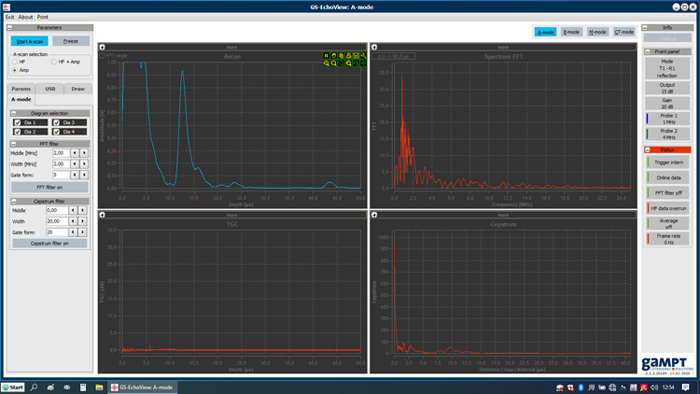PHY01 Basics of Ultrasound Echography
Couldn't load pickup availability
Basics of Ultrasound Echography
Investigation of a specimen with enclosed defects using the pulse-echo method
A specimen with enclosed defects is examined using the pulse-echo method. Amplitude scans are performed from different sides of the body. The echo signals depicted in the recorded A-scans are examined and analyzed.
Keywords: propagation of ultrasonic waves, sound propagation time, sound velocity, sound characteristic impedance, reflection and transmission, pulse-echo method, ultrasonic A-scan
The pulse-echo method forms the basis of numerous imaging methods in non-invasive medical diagnostics or non-destructive material testing. In the method, an ultrasound probe converts electrical impulses into mechanical vibrations. These are coupled into the body to be examined and pass through it as sound waves. Waves reflected by disturbances run back to the probe and are converted back into an electrical signal. The temporal recording of the amplitude of this signal (amplitude scan) is graphically displayed as a so-called ultrasound A-image. Using the reflection echoes in the A-image, sound travel times can be determined, the speed of sound in the material can be calculated and disturbances in the body can be detected.

PHY01 Schematic test block

The screenshot above of the measurement software shows a typical ultrasound A-scan of the test block. The following can be seen: the initial echo, the echo of a disturbance and the ground echo at the material-air boundary at the opposite end of the body. The value to be determined for the speed of sound in the test block (acrylic) is approximately 2700 m/s. The depth of the disturbances' reflection echoes in the test body can be determined using the determined speed of sound and the measured sound travel times.
SCOPE OF DELIVERY:
| Item No. | Designation |
|---|---|
| 10400 | Ultrasonic echoscope GS200 |
| 10151 | Ultrasonic probe 1 MHz |
| 10201 | Test block (transparent) |
| 10204 | – optional: test block (black) |
| 70200 | Ultrasound gel |
ADDITIONAL EXPERIMENTS:



